Guilt, daily life, and love
AIDS narratives in the time of triple therapies
The purpose of this paper is to analyse the portrayal of triple therapy (a combination of three antiviral drugs proposed at the Vancouver International AIDS Conference in 1996) in three literary texts belonging to the Latin American HIV-positive corpus. Our aim is to track the changes in relation to previous AIDS narratives in three areas: feelings of guilt, everyday life, and the search for love/eroticism. The selected corpus consists of the autobiography Un año sin amor. Diario del sida (1998) by the Argentine author Pablo Pérez, the novel La promesante (2001) by the Nicaraguan writer Rosario Aguilar, and the chronicle Vivir con virus. Relatos de la vida cotidiana (2004) by the Argentine journalist Marta Dillon.
Keywords: AIDS, triple therapies, Hispanic American literature, guilt, daily life, love.
Introduction
The purpose of this paper is to analyse three literary texts written in Latin America after the emergence of triple therapy, i.e., using a combination of three drugs to reduce the load of the human immunodeficiency virus (HIV) in the blood to help restore patients’ immune defences. According to Giordano (2005) it is possible to identify two periods in the history of AIDS patient narratives: before and after the discovery of the three-drug cocktail proposed at the 1996 International AIDS Conference in Vancouver, Canada, which marked a significant decrease in mortality rates among these patients. Giordano asserts that the fundamental difference lies in the way the effects of the syndrome are represented: in the before period it is a mortal illness whose patients were condemned to death and in the after period, it is a chronic illness which does not necessarily end in death.
This fact produced some important transitions in the «HIV-positive textual corpus» (Meruane, 2012) which, from that date onwards, faced different problems such as the search for love and setbacks resulting from people infected with HIV being rejected by their partners.
«Since the creation of triple therapy, the “HIV-positive textual corpus” faced different problems such as the search for love and people infected with HIV being rejected by their partners»
Three different general texts have been chosen: an autobiography in the form of a diary, a chronicle, and a novel. Un año sin amor. Diario del SIDA (“A year without love. An AIDS diary”) an autobiography or autofiction genre text by Pablo Pérez (1998) opens this journey through time by translating the transformations that took place in the life of the narrator, Pablo, into words. It chronicles the start of his new treatments and his new expectations for life after having already accepted the idea of his coming death. According to Vaggione (2014, p. 119): «This text can be considered – and critics have read it this way – as a pivot text marking the passage between AIDS as a deadly disease and AIDS as a chronic disease.»
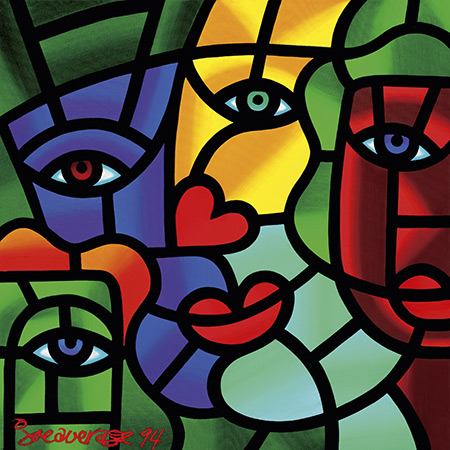
It is possible to separate two periods in the history of AIDS patients’ narratives: before and after the discovery of the cocktail of drugs proposed at the 1996 International AIDS Conference in Vancouver (Canada), which marked a significant decrease in mortality rates among these patients. Above, One world, one hope, by Joe Average, used in the poster of the International AIDS Conference in Vancouver. Image reproduced with permission of the artist. / Joe Average
The book Vivir con virus. Relatos de la vida cotidiana (“Living with a virus. Daily life accounts”) by Marta Dillon (2004), published in Argentina a few years later, compiles the chronicles published between 1995 and 2003 in the supplement «No» from the newspaper Página/12. Although the texts are written in the first person singular, they also give a voice to other infected people who told Dillon their stories through a variety of means.
The third text analysed is the novel La promesante (“The pious promiser”) by Rosario Aguilar (2001) which tells the story of Cecilia, a 22-year-old girl who leaves the island of Ometepe in Nicaragua after her father’s suicide to settle in New York with her mother. When she is tested in the big city, she finds out she is HIV-positive. In 2001, this novel won the Gabriela Mistral Prize, awarded by the Côté-femmes association, in collaboration with the group Mujer y Sociedad and the Bogota International Book Fair.
«In ‘Un año sin amor. Diario del sida’ and ‘Vivir con virus’, the narrators give us a detailed account of their daily life in relation to the disease»
La promesante differs from the other two texts in some fundamental respects. One important difference is that, unlike the first-person narrator of Un año sin amor and Vivir con virus, the story here is primarily told from the perspective of an omniscient narrator. In this sense, the format of the two aforementioned works – a diary and a weekly chronicle – is replaced by a narrative that does not capture the details of the passage of time in the main character’s daily life. In addition, the ideological stance towards the disease is different because Cecilia treats her illness as though it were the end of the world. Although her first symptoms appear on the night of 31 December 1999, when the results of triple therapy had already considerably advanced, Cecilia lives her illness out as a symbolic death that forces her to withdraw from the world and abandon the idea of finding a partner or someday being a mother. Hence the title, La promesante (“The pious promiser”).1

A central element of Un año sin amor. Diario del sida (1998) by Argentine author Pablo Pérez is that it reintroduces sexuality, which had fallen into the background in pre-cocktail AIDS narratives. In the picture, an original poster for the film A year without love, directed by Anahí Berneri in 2005 as an adaptation of the book. / BD cine / CInema Digital
While the two Argentine texts again raise the issue of the search for love and the complications of HIV and sexuality, there is no future for the girl in Aguilar’s text (2001, p. 127): «Lo único que deseaba en ese momento era vivir como una monja, una novicia. Un cuarto con cuatro paredes peladas, rústicas, encaladas. Una cama, una silla, una mesa.»2 These words expressed almost at the end of the novel indicate the feeling of guilt, which Cecilia is unable to rid herself of, perhaps because of her uncritical adherence to Catholicism.
The return of guilt
The analysis of the texts indicates an important fact: the more the lifestyle is adapted to the canons of patriarchal society, the greater the feeling of guilt.
Cecilia, who was infected with HIV in her first and only heterosexual relationship, lives under the grip of an immense guilt that will lead her, at the end of the novel, to sacrifice her life for the sake of science. The girl offers her body and future to a pharmaceutical company to experiment with new drugs to try to find a vaccine that will, of course, be too late to save her.
In Marta Dillon’s work, which chronicles the history of a person who, in addition to taking illegal drugs, had also had multiple sexual partners, guilt is something to fight against. The narrator makes every effort to remove the ghosts of guilt associated with her childhood memories and connected to the Argentine dictatorship.
Hace unos años […] me enteré de que tenía vih [sic]. Lo primero que vino a mi mente fue mi mamá y la confirmación de que la historia podía repetirse. Ella desapareció en 1976, yo tenía 10 años. […] Es cierto que era nada más que una nena. Pero aprendí la culpa.3
(Dillon, 2004, p. 57).
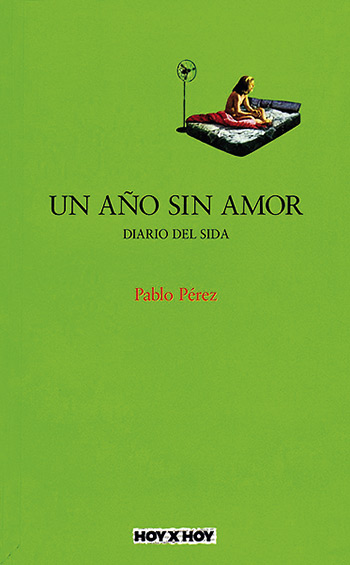
Perfil Libros
Dillon acknowledges that the burden of guilt hangs over AIDS patients. However, she does not allow herself to be overcome and makes a constant effort to think of different strategies to disrupt this feeling.
La vida anida en cualquier agujero. Pero esa culpa que aprendí me juega malas pasadas. A veces me veo buscando compulsivamente desaparecer del mundo en una cama cualquiera y me convenzo de que esa pulsión de muerte está unida a la culpa de aprender a vivir sobre los escombros.4
(Dillon, 2004, p. 58)
Unlike Cecilia, the narrator continually and vehemently rebels against the finger that blames the sick:
Nadie se lo buscó, me enojo en silencio, pero nada puede borrar esa sensación de injusticia que dejó su relato. No es diferente de Marcela, pienso, que asegura que en sus 21 años sólo tuvo dos parejas y también se infectó sin pensar que esa posibilidad podía ser real.5
(Dillon, 2004, p. 41).
Dillon, the daughter of a mother who disappeared during the Argentine dictatorship, maintains her political resistance because her chronicles, like those of Pedro Lemebel (2013), establish a clear relationship between AIDS and the dictatorship (Ostrov, 2011; Poe, 2016).
Finally, it should be noted that in Un año sin amor, Pablo has no sense of guilt even though his lifestyle is far removed from bourgeois heterosexual morality. In this sense, we could say that AIDS narratives written by women have brought back the problem of guilt.
«The more the lifestyle is adapted to the canons of patriarchal society, the greater the feeling of guilt»
Therefore, female writers give a voice to many infected people, who, in addition to enduring the disease, must deal, day-to-day, with a feeling of guilt imposed by society and which haunts them from within. However, clearly these two texts written by women do not take the same stance on the issue: Cecilia is consumed by guilt, while the narrator of Vivir con virus uses writing to denounce it.
Living with HIV
In Un año sin amor. Diario del sida and Vivir con virus, the narrators give us a detailed account of their daily life in relation to the disease, so writing is central to their situation. In the first entry of the newspaper in Un año sin amor. Diario del SIDA, dated 17 February, Pablo writes: «Tengo que escribir. Hace tiempo que nadie me llama, hace tiempo que no escribo y cuando me siento a escribir siempre interrumpe algún inoportuno»6 (Pérez, 1998, p. 19). In the prologue of the novel, artist and sociologist Roberto Jacoby remarks: «Como en Las mil y una noches, producir texto es producir vida, o sobrevida, son una misma operación. El diario funciona como prórroga»7 (Pérez, 1998, p. 11).
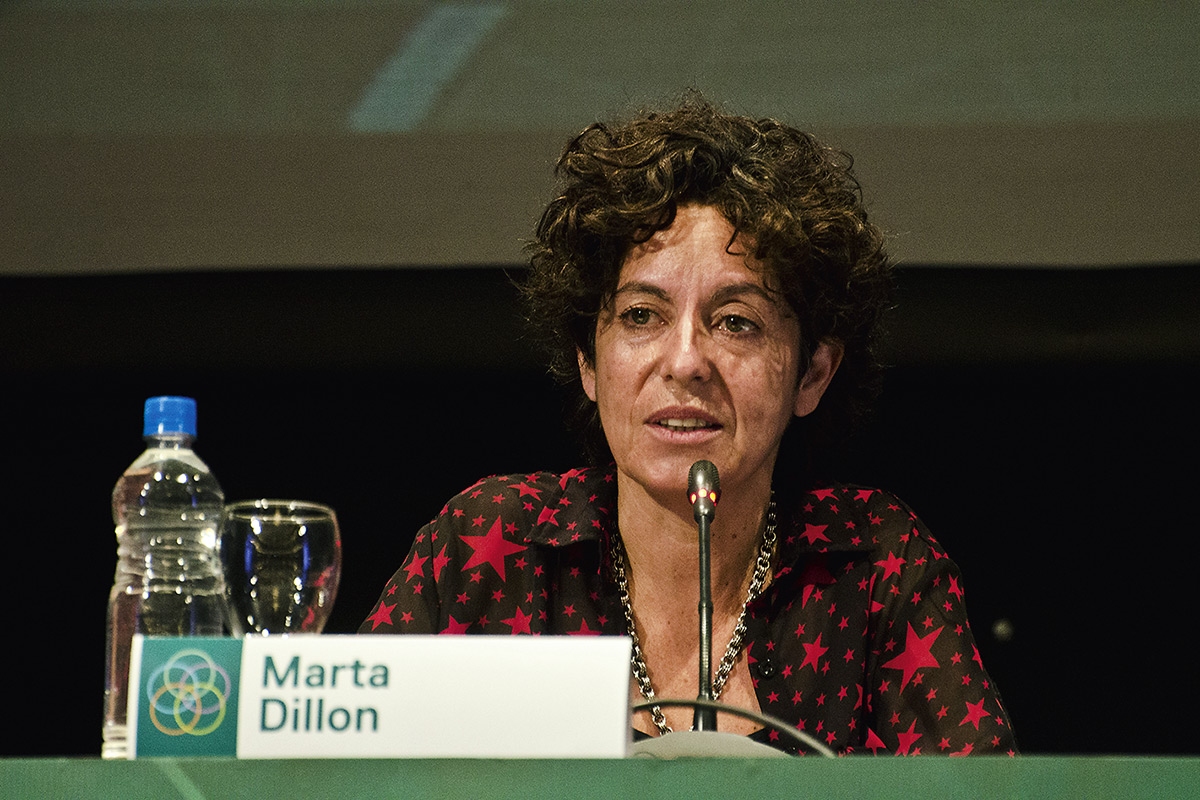
The book Vivir con virus. Relatos de la vida cotidiana (2004) by Marta Dillon (in the picture) compiles the chronicles published in the supplement «No» from the newspaper Página/12. Although the texts are written in the first person, they also give a voice to other infected individuals who told Dillon their stories using a variety of means. / Romina Santarelli/ Ministerio de Cultura (Argentina)
In the case of Dillon, writing records everyday life by describing his rituals, thoughts, diet, medications, alternative therapies, and meetings with health professionals in greater detail. Thus, even the slightest energetic gestures break into the writing space as a form of resistance.
Another common feature in these two texts is that their narrators insist on the need to take care of themselves (a goal that is not always achieved), so that their bodies are transformed into a book whose signs must be constantly interpreted.
Vivir con vih [sic] me exige un constante viaje interior que no es solo por el alma. Pero que igual me obliga a la conciencia. Un viaje que tengo que hacer sola porque ni siquiera mi médico puede ayudarme si yo no distingo cuáles de esas molestias cotidianas pueden ser síntomas de algo más. Esta evaluación es un trabajo que nadie puede hacer por mí. Me deja sola analizando cada secreción, cada secreto mensaje de mi cuerpo.8
(Dillon, 2004, p. 52)
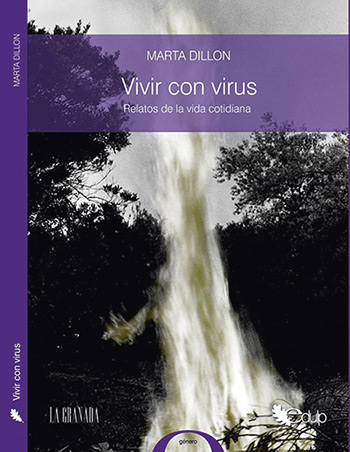
EDULP
While Pablo and Marta had initially refused to take AZT (due to conflicting opinions about its benefits), when the new cocktail appears both decide to submit to the change in the dynamics of their daily life that using it implies. The narrator describes the acceptance process as a resignation: «Era someterse a un rito diario que me recordaba permanentemente que había renunciado, que me estaba sometiendo a las agresiones de la medicina que solo entiende el cuerpo como un campo de batalla»9 (Dillon, 2004, p. 89).
Paul and Martha’s life are governed by the schedule that taking the medication requires.
Creo que tomar AZT y DDI hace que el sida esté presente en todo momento, que no pueda olvidarme de mi enfermedad, me siento feo y enfermo, encerrado en mí mismo, siempre con la idea de que voy a morir pronto.10
(Pérez, 1998, p. 118)
The cinema version, A year without love (Berneri & Burman, 2005), filmed a close-up of a DDI tablet falling into a glass of water and made viewers observe the slow process of dissolving the drug into the liquid. This scene captures, in a masterful synthesis, Pablo’s sense of suffocation at the extreme medicalisation of his life.
The daily life of an HIV-positive person is so complicated that «los médicos recomiendan llevar un diario de medicación para no perder tomas porque la continuidad es fundamental para el éxito de los tratamientos combinados. Un tratamiento irregular puede ser un tratamiento nulo»11 (Dillon, 2004, p. 56). The narrator feels overwhelmed by the dynamics that medication imposes onto her daily life and hours of rest.
«Although Cecilia [‘La promesante’] has been hired to give support talks to other AIDS patients, she still lacks basic information about how the virus is actually transmitted»
Although Dillon, in her work as a journalist, has some leeway in her timetable, her chronicles show a constant concern for those who have a schedule that does not allow them to submit to the tyranny of medication programmes. In this sense, of the three texts that I have chosen for analysis in this paper, Vivir con virus is the one which occupies itself the most with the everyday details the HIV-positive community struggles with. In addition, the chronicle format allows the narrator to definitively denounce the precarious situation of AIDS patients in her country, at a time when drugs already existed that could have ostensibly improved their lives. In her chronicles, Dillon lends her voice to those who have no chance of expressing their suffering.
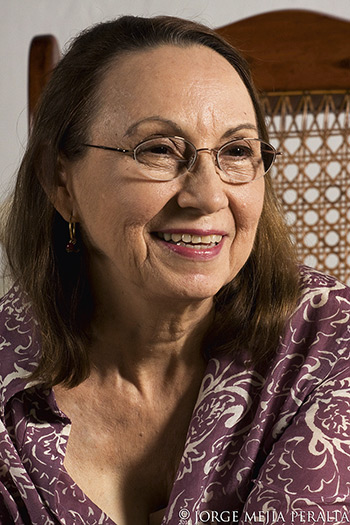
La promesante (2001), by Rosario Aguilar, tells the story of Cecilia, a 22-year-old HIV-positive girl. Although her first symptoms appeared in 1999, when triple therapy had already considerably advanced, the main character lives with her illness as a symbolic death that forces her to withdraw from the world. In the picture, the Nicaraguan author Rosario Aguilar. / Jorge Mejía Peralta
Sex, love, and asceticism
Perhaps the most divergent aspect of the three texts is how their characters look for love. In Un año sin amor, the absence and, consequently, the search for love defines the text from its title onwards. However, the very existence of this diary depends on the lack of love it describes: «Por un momento pensé que había llegado el amor que tanto esperaba y hasta temí por este diario. ¿Podría mostrarle toda esta desnudez a alguien a quien amo? ¿Podría seguir escribiendo todo esto estando enamorado?»12 (Pérez, 1998, p. 49). Pablo is a gay author who makes a living teaching French and doing translations. He carries the weight of the death of his life partner, Hervé, who died from AIDS while Pablo was studying in France. In the choice of name, Giordano (2005) saw a tribute to the French writer Hervé Guibert, who died of AIDS.
Pablo desperately tries to fall in love again, and so his life revolves around his phone, even though his body feels weakened by coughing, fungal infections, and fatigue. In addition to the newspaper, the protagonist writes ads in the press to try to find love and sexual encounters with other men. A central element of this novel is that it reintroduces sexuality, which had fallen into the background in pre-cocktail AIDS narratives. Far from any restrictive concept of sex, the novel portrays gay sadomasochistic sexuality as a meeting place for people who, paradoxically, take care of each other. The narrator describes the delicate balance behind these practices, which play with the limits of pain and pleasure, without reservations and with precise and gritty language.
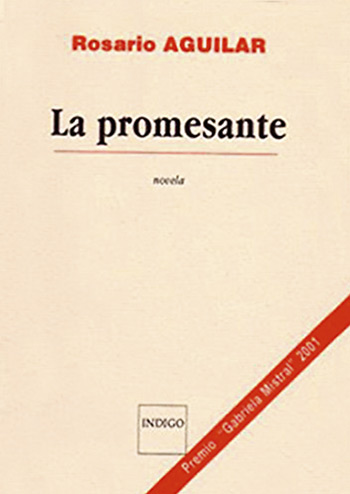
Indigo / Côte-femmes
For Pablo, love and sexual pleasure are strongly linked, so much so that he stubbornly seeks love in his casual encounters with strangers. However, in this search and in the exploration of his sexuality, AIDS is a real obstacle, anchored in his body.
Yo tengo ganas de vivir una historia de amor con él, aunque sea por quince días, pero ahora no sé que hacer, si decirle que no deberíamos coger o explicarle que puede ser contagioso pero no necesariamente, o no sé qué. Lo que sí tengo decidido es que de alguna forma le voy a explicar lo que me pasa: «Quiero vivir una historia de amor con vos, me volvés loco, pero surgió un problema: no puedo coger con vos porque tengo una micosis, es una lástima, espero que tengamos otra oportunidad de vernos, por el momento debo encarar un mes de abstinencia.»13
(Pérez, 1998, pp. 30-31)
Throughout the novel, Pablo finds new lovers with whom he practices a sexuality that goes against the norm. In addition to gay sadomasochistic sex, he participates in group sex sessions and visits the bathrooms and pornographic cinemas of Buenos Aires. Despite the fatigue and symptoms of his illness, Pablo finds multiple sexual partners in these places. Some he falls in love with, some he does not.
For the narrator of Vivir con virus, the problem is different and could be summed up in her fear of being rejected by her partners because they are afraid of being infected:
Hay que decir por ejemplo, tengo vih [sic]. Entonces pasás el día buscando las palabras, imaginando qué hacer si te devuelven el cachetazo […] si se mueren de pánico, si te dejan en tu casa después de cenar, con educación pero con ganas de salir corriendo hacia el centro de detección más próximo de enfermedades infecciosas.14
(Dillon, 2004, p. 184)
The fear of contagion suffered by the potential sexual partners of an HIV-positive person cannot be resolved with rational arguments because of its phantasmal nature. This makes it difficult to discuss the issue and, even more so, to overcome it.
We should also highlight the contrast with Vivir con virus, whose language points towards eroticism and feelings, compared to the openly sexualised style of Un año sin amor. The narrator never separates feelings from erotic experience: «Yo me animo a sentir. Me animo a decir “te quiero”. Me animo a sentir el corazón latiendo en los genitales, donde se lo puede acariciar. Lamer, amar»15 (Dillon, 2004, p. 52).
«In Dillon’s chronicles there is a spirit of constant struggle and writing is a privileged space used to denounce injustices and resist prejudice»
A third position opposes these two ways of seeking love/eroticism/sex: renunciation. In La promesante, in spite of her youth and the fact that Cecilia feels attracted to her doctor or to other patients from the support groups in which she works, she closes off any possibility of someday finding the love that, quite traditionally, she equates with marriage and the formation of a heterosexual family. On a visit to Nicaragua, she confesses to her older sister that she has felt love at times:
Amor contradictorio que no quiero, que no debo sentir y que se me impone muy a mi pesar. Me resulta muy triste saber que no puedo ni debo enamorarme de nadie. […] ¡Yo jamás expondría a otro ser humano a contagiarse con el horrible virus!16
(Aguilar, 2001, p. 110)
Although Cecilia has been hired to give support talks to other AIDS patients in the United States, she still lacks basic information about how the virus is actually transmitted. Such is the weight of her guilt that she ends her story confined in a ghostly place, cut off from the rest of the world, without access to mail or a telephone. In a hopeless promise, she says:
Comprendo que no puedo ni debo enamorarme de ningún otro hombre. Que de ahora en adelante son inalcanzables para mí. Sé que no puedo ni debo soñar. Para mí un hombre, desde el aspecto del amor íntimo, carnal, no debe existir.17
(Aguilar, 2001, p. 110)
«In ‘Un año sin amor. Diario del sida’ and ‘Vivir con virus’ raise the issue of the search for love and the complications of HIV and sexuality»
It is evident that, unlike Un año sin amor, the two texts of female authorship are concerned with helping others, although the strategies for achieving this are different. In Dillon’s chronicles there is a spirit of constant struggle and writing is a privileged space used to denounce injustices and resist prejudice. Conversely, Cecilia, imprisoned by Catholic morality, which generates an insurmountable feeling of guilt, offers herself as a good martyr at the sacrificial altar of a pharmaceutical company. Her body will help to test medications that might help others in an uncertain future.
1. The RAE dictionary defines promesante as «a person who fulfills a pious promise, usually by going in procession». Used in Argentina, Chile, Bolivia, and Nicaragua. (Go back)
2. «All I wanted at the time was to live like a nun, a novitiate. A room with four bare, rustic, whitewashed walls. A bed, a chair, a table.» All quotations translated in this article by Mètode SSJ. (Go back)
3. «A few years ago [...] I found out I had hiv [sic]. The first thing that came to mind was my mother and the confirmation that history could repeat itself. She disappeared in 1976, I was 10 years old. [...] Of course, I was nothing but a child. But I learned about guilt». (Go back)
4. «Life breeds in any hole. But the guilt I learned plays tricks on me. Sometimes I find myself compulsively seeking to disappear from the world in some random bed and I am convinced that this death drive is connected to the guilt of learning to live amid the debris» (Go back)
5. «Nobody was asking for it, I get angry in silence, but nothing can erase the sense of injustice that her story left. Not unlike Marcela, I think, who says that in her 21 years she only had two partners and also got infected thinking it was not a real possibility» (Go back)
6. «I have to write. No one has called me for a long time, I haven’t written in a long time, and when I sit down to write there is always an untimely interruption» (Go back)
7. «As they said in One thousand and one nights, producing text is producing life, or survival – it is the same operation. The newspaper works as an extension.» (Go back)
8. «Living with hiv [sic] requires a constant inner journey, not only for the soul. But it still compels me to conscience. A trip I have to take alone because not even my doctor can help me if I don’t know which of these everyday discomforts can be a symptom of something else. This evaluation is a job that no one can do for me. It leaves me alone analysing every secretion, every secret message from my body.» (Go back)
9. «It meant submitting to a daily ritual that permanently reminded me that I had resigned, that I was submitting to the aggressions of medicine, which understands the body only as a battlefield» (Go back)
10. «I think taking AZT and DDI makes AIDS present at all times, makes me unable to forget my illness, I feel ugly and sick, locked up into myself, always with the idea that I will die soon.» (Go back)
11. «Doctors recommend keeping a medication diary to avoid missing a dose, since continuity is essential for the success of combination treatments. An irregular treatment may be an invalid treatment» (Go back)
12. «For a moment I thought that the love that I had been waiting for so long had arrived, and I even feared for this diary. Would I be able to bare myself like this to someone I love? Would I still be able to write all this when I’m in love?» (Go back)
13. «I want to live a love story with him, even if it’s for a fortnight, but now I don’t know what to do, whether to tell him we shouldn’t screw or explain that it can be contagious but not necessarily, or whatever. What I have already decided is that I’m going to explain to him in some way what’s going on with me: “I want to live a love story with you, you drive me crazy, but a problem appeared: I can’t have sex with you because I have a fungal infection, it’s a pity, I hope we have another chance to see each other, for the moment I have to face a month of abstinence.”» (Go back)
14. «You have to say, for example, I have hiv [sic]. Then you spend the day looking for words, figuring out what to do if they slap you back [...] if they panic, if they leave you at home after dinner, politely but wanting to run away to the nearest infectious disease detection centre.» (Go back)
15. «I encourage myself to feel. I encourage myself to say “I love you”. I encourage myself to feel my heart beating in my genitals, where it can be caressed. Licked, loved» (Go back)
16. «A contradictory love that I do not want, that I should not feel and that is imposed on me very much to my regret. I find it very sad to know that I can’t and shouldn’t fall in love with anyone. [...] I would never expose another human to infection with this horrible virus!» (Go back)
17. «I understand that I cannot and must not fall in love with any other man. That from now on they are unattainable to me. I know I can’t and shouldn’t dream. For me, a man, from the aspect of intimate, carnal love, must not exist.» (Go back)
References
Aguilar, R. (2001). La promesante. Paris: Indigo & Côté-femmes.
Berneri, A. (Directora), & Burman, D. (Productor). (2005). Un año sin amor [motion picture]. Argentina: BD Cine i Cinema Digital.
Dillon, M. (2004). Vivir con virus. Relatos de la vida cotidiana. Buenos Aires: Norma.
Giordano, A. (2005). La consigna de los solitarios. Escritura y sobrevivencia en Un año sin amor. Diario del SIDA de Pablo Pérez. Iberoamericana, 5(19), 41–49. doi: 10.18441/ibam.5.2005.19.41-49
Lemebel, P. (2013). Loco afán. Crónicas de sidario. Santiago de Chile: Seix Barral.
Meruane, L. (2012). Viajes virales. La crisis del contagio global en la escritura del sida. Santiago de Chile: Fondo de Cultura Económica.
Ostrov, A. (2011). Cuerpo, enfermedad y ciudadanía en las crónicas urbanas de Pedro Lemebel. Confluenze, 3(2), 145–157. doi: 10.6092/issn.2036-0967/2393
Pérez, P. (1998). Un año sin amor. Diario del SIDA. Buenos Aires: Perfil.
Poe, K. (2016). Intermedialidad y estética neobarroca en Loco afán. Crónicas de sidario de Pedro Lemebel. Textos Híbridos, 5, 109–128.
Vaggione, A. (2014). Literatura/enfermedad. Escrituras sobre sida en América Latina. Córdoba: Centro de Estudios Avanzados.
Acknowledgements
This article is framed within the research project Writing AIDS. Sick body, mourning, and resistance strategies in Hispanic American and Caribbean novels (1992–2004) with which the author was appointed as Humboldt Chair 2015 (a recognition awarded by the German Academic Exchange Service and the Vice-rectorate for Research of the University of Costa Rica).





